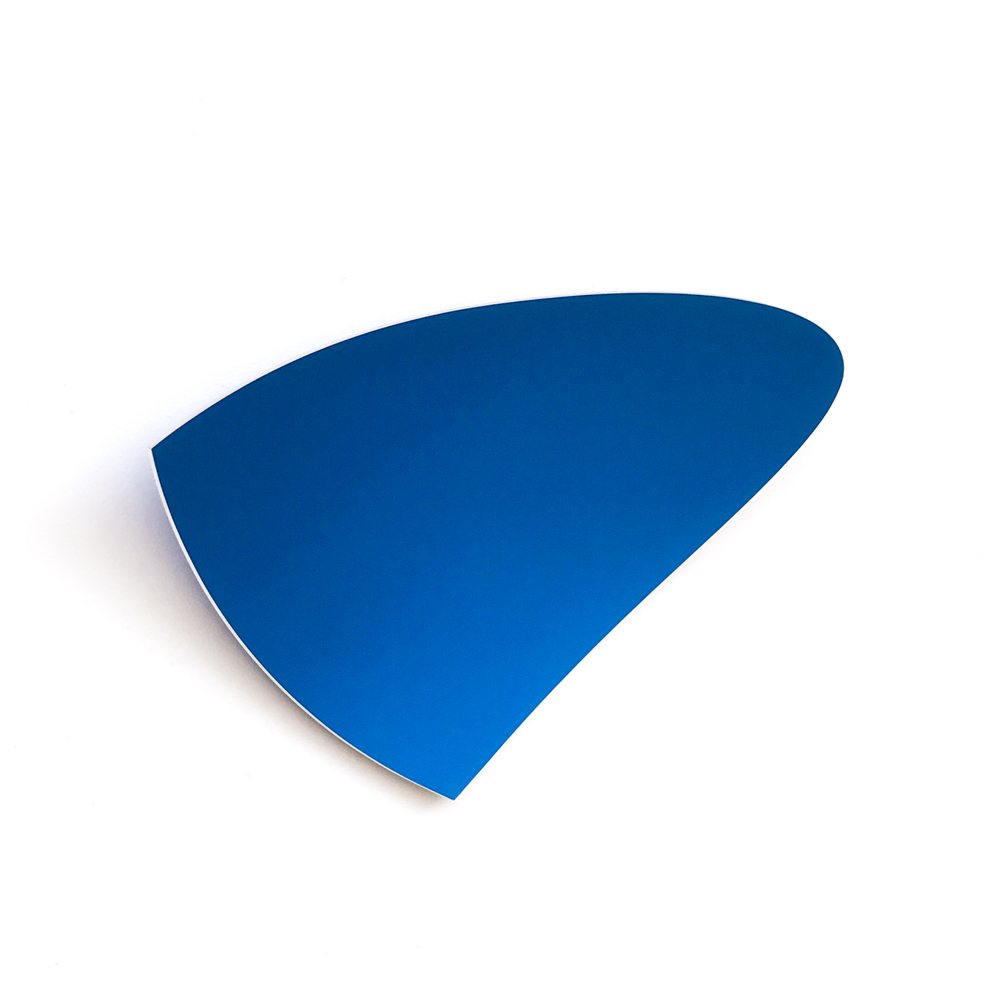Jon Carter
Anodize This – Heiner Thiel does Chill Minimalism
Santa Fe Reporter August 9-15 2000
Heiner Thiel does chill Minimalism. Give it up for Charlotte Jackson and her unfailing intuition. (In the future, we’ll all live by insight.) She runs her gallery like an artist. By applying solid conceptual parameters to Charlotte Jackson Fine Art, she’s created a space for Minimalism to act itself out-not simply as aesthetic, but also as ethic; as a way to run an art gallery Oscar Wilde first perfected this “making your aesthetic choices your guide” to a kind of higher public ethic, a bit before the last century clicked off.
Artists have only their art and their -bodies as sites of ethical or aesthetic choice, but dealers have their spaces also. Art’s a commodity, and what you choose to do in your business place, what you decide to sell in your stores, says it all, like organic produce.
And the most recent crop of cool, colored squares are in fresh. Heiner Thiel kicks it live from Deutschland. Don’t go around scratching your head like a monkey trying to decide if he’s a sculptor or a painter. It doesn’t matter. He’s both. He’s neither. He’s showing reliefs here, if you have to get technical. Oh, is that what those are? says the collector from Tulsa. Like Ghiberti’s bronze doors on the Baptistry in Florence, remember?
He has thin, square pieces of anodized aluminum in all these coolio colors. He’s bending up the corners. If it were only that simple. The anodizing makes the bright, sexy tones and the forms are all mathematically based segments of a perfect sphere. None of them are square, however; they all have softly swelling edges that curve in correspondence to the curling corners to make them look square. It’s tricky huh?
His dad and his bro are magicians of mathematics as he is a hypnotist of shaped color. So they’re square, but only in perception. What else is like that? Is there round-looking stuff which is really straight-edged? This line of wondering begins playing infinitely in the back of your mind.
You are getting very sleepy. You’re being mesmerized by the art of Heiner Thiel. And it’s pretty mesmerizing. He succeeds admirably at his goal of fusing color and space. The colors are derived from the way the aluminum is anodized. Like we all use that word -yuh huh, you gonna go out and anodize the tractor tonight, Pa? You betcha.
Anyway, the quarter-inch, corner-curled square of curved edges takes a chemical bath, an anodizing bath, and depending upon the combination of chemicals and time in the tub, different colors occur. Anodizing: a way to rust aluminum and get all these wild and funky colors. Except there’s none of the incident of rust. These wafer-thin surfaces are perfectly uniform in color, and the texture is smooth as an aluminum baby’s butt. That tractor’s looking a mess, Pa, but the sun sure bounces off her nice.
Some are shiny metallic, and some are matte flat. But they all pulsate on the white wall, in the ambient light ~f the room, like great saucers for light, at which quasar cats lap, living as comfortably on vertical surfaces as horizontal ones,, immune to gravity’s effects.
Modern Minimalism is peaking as we’re speaking. It’s slipped into the culture of everyday America, as design, just like the Bauhaus knew that it would. The efforts of Destijl weren’t made in vain. It’s a good thing too ’cause it’s been getting kinda hectic, running from the man and all. Minimalism can create a very chill space.
Thiel situates you in a space between perception and imagination and makes a case for how seamlessly these landscapes are fused. He (and Charlotte Jackson) demonstrate that rich visual and conceptual experience often come from the application of apparent limits, which, when truly imposed truly by the self, open vistas of possibility.
The concepts put forth by early modernist thinkers like Mondrian and Malevich are generative structures of far-reaching fecundity. It’ll be a long time yet ’til the Minimalist stock on the shelves of art history is replaced. It’s taken longer to start seeping into the cultural landscape than surrealism did, but both seep still. Minimalism promises the intensifying of awareness called intuition. The calm, meditative state these paintings create, and the heightening of perception they require, encourage an intuitive state which, if applied as an ethic, results in something called peace.

